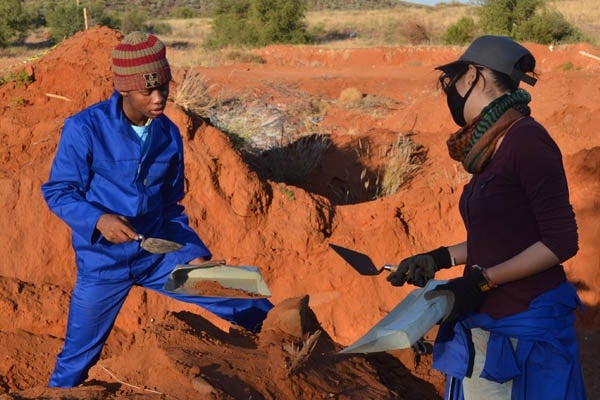
Diamond mine dig offers rare glimpse at enclave of racial coexistence in 19th Century South Africa
Published: June 22, 2015
An unassuming hill in rural South Africa held secrets of a surprising history between Europeans and Africans for more than a century, says a team of archaeologists from the University of Toronto and the McGregor Museum of South Africa.
“About 150 years ago this hill was teaming with people, a real mixture of European and African," said U of T anthropologist Michael Chazan. “The separation of races that came to characterize South Africa was maybe not quite so prevalent in the 1860s, and the division of labour we came to think of under apartheid did not develop as early on as people had believed.”
The group uncovered evidence of complex social interactions between colonial and local populations on the hill of a former diamond mine, known as Canteen Kopje, in the Northern Cape province of South Africa.
Their dig was intended to investigate reports that an Iron Age settlement has been disturbed by mining for sand. But, rather than revealing expected evidence from the 500-year-old village of the Tswana people, the U of T archaeologists found African pottery and European glass located only centimetres apart, likely dating from the 1860s.
“We landed on a little bit of a window on a period of interaction and coexistence during the time of colonization,” said Chazan.
The excavations at Canteen Kopje was part of an archeological training course for heritage students from the newly established Sol Plaatje University in South Africa. University of Toronto students worked with their peers from Sol Plaatje, sharing the techniques and equipment used in archaeological research.
“It’s really cool to talk to local people our own age who are also doing postsecondary education but in a totally different situation,” said Meghan Macleod, a student participating in the excavation as part of the Faculty of Arts & Science 399 Research Excursions program.
“It was nice to see them make the connection with their own past.”
Ironically, mining now threatens to destroy all traces of the inter-racial community it helped create more than 100 years ago. The South African government’s Department of Mines has issued permits to develop the site, though the Heritage Resources Agency says it is seeking to preserve the site with the support of the researchers.
Pushing against economic development in the name of heritage will be a hard fight to win in an area with a “tremendous amount of poverty and unemployment,” said Chazan.
Sol Plaatje University launched only last year, admitting little over 100 students in a first step towards boosting the region's economy and academic landscape. The dig with University of Toronto was one of Sol Plaatje's earliest archaeological collaborations.
“We’re very proud that we played a role in launching one of the first South African universities to be founded since the end of apartheid," said Chazan.



